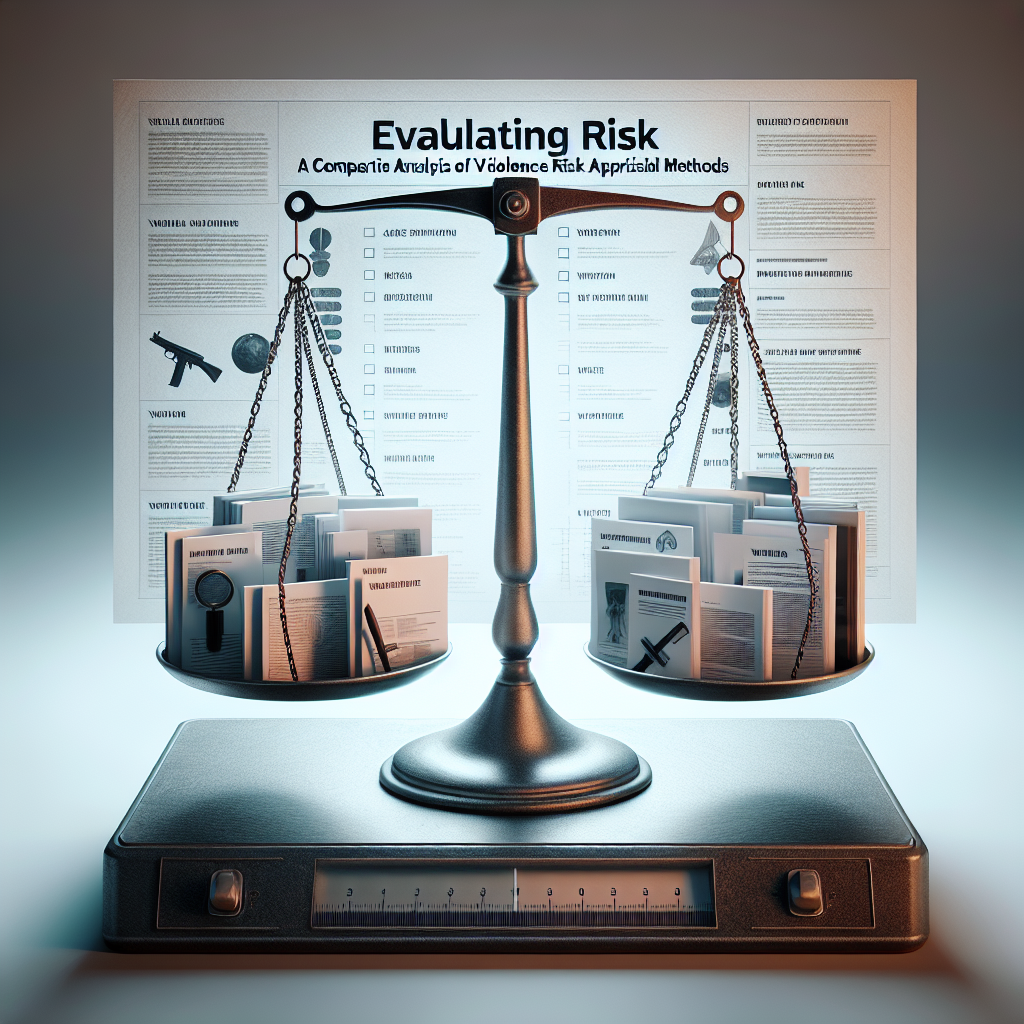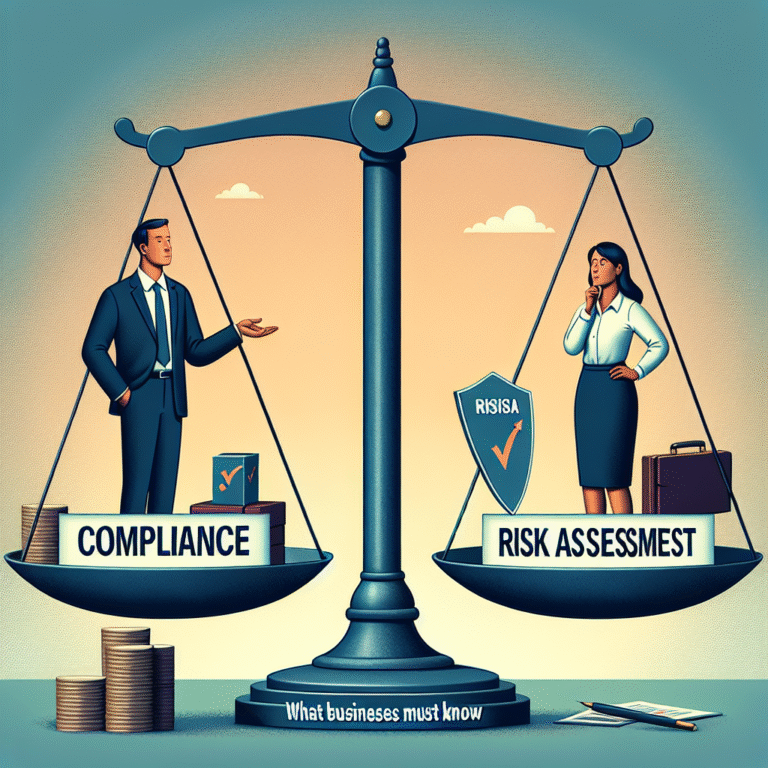
Introduction
In today’s increasingly complex landscape of crime and safety, evaluating risk—especially concerning violence—is more crucial than ever. As societies grapple with a multitude of challenges, from domestic violence to mass shootings, understanding how to assess the potential for violent behavior has emerged as an essential element in public safety strategies. With an array of violence risk appraisal methods available, choosing the right one can significantly affect decision-making in various sectors, including law enforcement, healthcare, and social services.
Imagine a world where risk assessments are not just numbers but present a holistic picture of threats, improving the effectiveness of interventions. This article aims to provide a comprehensive viewpoint on Evaluating Risk: A Comparative Analysis of Violence Risk Appraisal Methods, capturing various methodologies and their unique attributes.
Understanding Violence Risk Appraisal: The Basics
What Are Violence Risk Appraisal Methods?
Violence risk appraisal methods are structured tools designed to identify and predict the likelihood of an individual committing violent acts. These tools integrate clinical judgment with statistical data, aiming to inform critical decisions in areas like criminal justice, mental health assessments, and community safety initiatives.
Why Is Evaluating Risk Important?
Assessing the risk of violence is not just a theoretical exercise; it carries real-world implications. Accurate risk appraisals can help in:
- Preventing future offenses: By recognizing warning signs early.
- Resource allocation: Ensuring that intervention resources go to those at the highest risk.
- Justice system efficiency: Enhancing public safety while respecting individual rights.
Key Factors in Violence Risk Assessment
When evaluating risk, certain factors consistently emerge as predictive indicators of violent behavior. These include:
- Historical violence: Previous acts can be a strong indicator of future behavior.
- Substance abuse: Correlation with increased aggression.
- Mental health status: Certain conditions may increase risk factors.
- Social environment: Peer influence and societal factors can escalate behaviors.
Comparative Analysis: Popular Violence Risk Appraisal Methods
In this section, we will explore several prominent violence risk appraisal methods.
1. Static-99 and Static-99R
Overview: Developed primarily for assessing the risk of sexual recidivism, these tools incorporate static (unchangeable) factors like age at release and prior offenses.
Strengths:
- Widely validated.
- User-friendly and straightforward.
Limitations:
- Only accounts for historical factors, which may not reflect current mental states.
Case Study:
The Static-99 tool has been effectively used in assessing sex offenders in Canada. In one notable case, a 2015 evaluation showed that individuals assessed with lower Static-99 scores had substantially reduced recidivism, demonstrating the method’s reliability.
| Factor | Static-99 | Static-99R |
|---|---|---|
| Age Factor | Yes | Yes |
| Current Offense | No | Yes |
| Predicted Accuracy | Moderate | High |
2. HCR-20 (Historical, Clinical, Risk Management)
Overview: A comprehensive tool, HCR-20 combines historical, clinical, and risk management factors to predict violent behavior.
Strengths:
- Incorporates dynamic factors that can change over time.
- Offers a multidimensional approach.
Limitations:
- More complicated to administer and requires extensive training.
Case Study:
In a longitudinal study involving psychiatric patients, the HCR-20 successfully identified individuals who were likely to become violent, leading to preventive measures that effectively reduced incidents, showcasing its practical application in mental health settings.
3. VRS (Violence Risk Scale)
Overview: The VRS tool emphasizes clinical factors alongside historical ones, striving for a balance between static and dynamic indicators.
Strengths:
- Focus on rehabilitative aspects.
- Effective in various populations, including those with mental illness.
Limitations:
- Limited comparative validation compared to the Static-99 and HCR-20.
Case Study:
The VRS was used in a program focused on offenders with serious mental illnesses. Results indicated that timely interventions based on VRS assessments reduced violent occurrences by 30%, illustrating its utility in targeted settings.
Practical Implications of Violence Risk Appraisal Methods
Law Enforcement Applications
In law enforcement, evaluating risk through reliable violence risk appraisal methods allows agencies to prioritize their resources and efforts effectively. Programs employing the HCR-20 have seen reduced incidents in high-risk neighborhoods, proving the necessity of systemic approaches grounded in robust data.
Healthcare Assessments
Mental health professionals utilize various appraisal methods to inform treatment plans for at-risk patients. By employing instruments like the VRS, therapists can tailor interventions to mitigate violence risk effectively.
Community Programs
Community-based organizations also leverage these appraisal methods to design educational and preventive programs. For instance, utilizing Static-99 data, communities can better understand local vulnerabilities and implement proactive measures.
Challenges in Violence Risk Appraisal
Ethical Dilemmas
One major challenge emerging from evaluating risk is the ethical implications of labeling individuals based on predictive tools. Such labeling can stigmatize individuals and influence their treatment in society.
Data Limitations
Data accuracy is crucial. If the data used to develop the models is flawed or biases exist, the predictions will be unreliable, leading to potentially unjust actions against individuals deemed "high risk."
Changing Contexts
As society evolves, the factors contributing to violence also shift. Continuous updates to evaluation methods are essential to maintain their relevance and accuracy.
Conclusion
As we explore the complexities of evaluating risk through various violence risk appraisal methods, it becomes evident that a one-size-fits-all approach is ineffective. Each method has its strengths and weaknesses, highlighting the need for flexibility in application depending on the context.
In summary, a nuanced understanding of these methods can lead to improved public safety, better resource allocation, and effective interventions. Whether one operates in law enforcement, healthcare, or community services, applying insights from Evaluating Risk: A Comparative Analysis of Violence Risk Appraisal Methods is paramount for fostering safer environments.
Motivational Takeaway
As we continue to refine our approaches towards violence risk assessment, let us remember that at the core of these methods lies the goal of safeguarding lives—both the potential victims and those at risk of offending. Embrace the power of informed assessment and action.
FAQs
1. What are the most common violence risk appraisal methods?
Common methods include Static-99, HCR-20, and VRS, each with its unique strengths and limitations.
2. How reliable are violence risk assessment tools?
Most violence risk appraisal methods have undergone extensive validation studies, showcasing moderate to high predictive accuracy.
3. Can these tools be applied to different populations?
Yes, many tools can be adapted for various populations, including mental health patients, sexual offenders, and more.
4. What are the ethical concerns regarding violence risk assessments?
Labeling individuals based on risk assessments can lead to stigmatization and unfair treatment in society, prompting debates on ethical implications.
5. How do these methods evolve over time?
As research progresses and societal factors change, appraisal methods undergo updates to incorporate new findings and enhance predictive accuracy.
With a robust understanding of various violence risk appraisal methods, stakeholders across sectors can better navigate the complexities of public safety, ultimately contributing to a safer, more informed society.

















